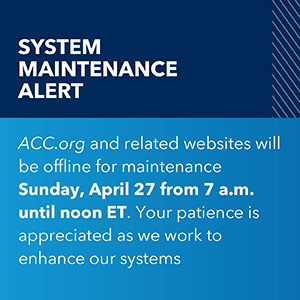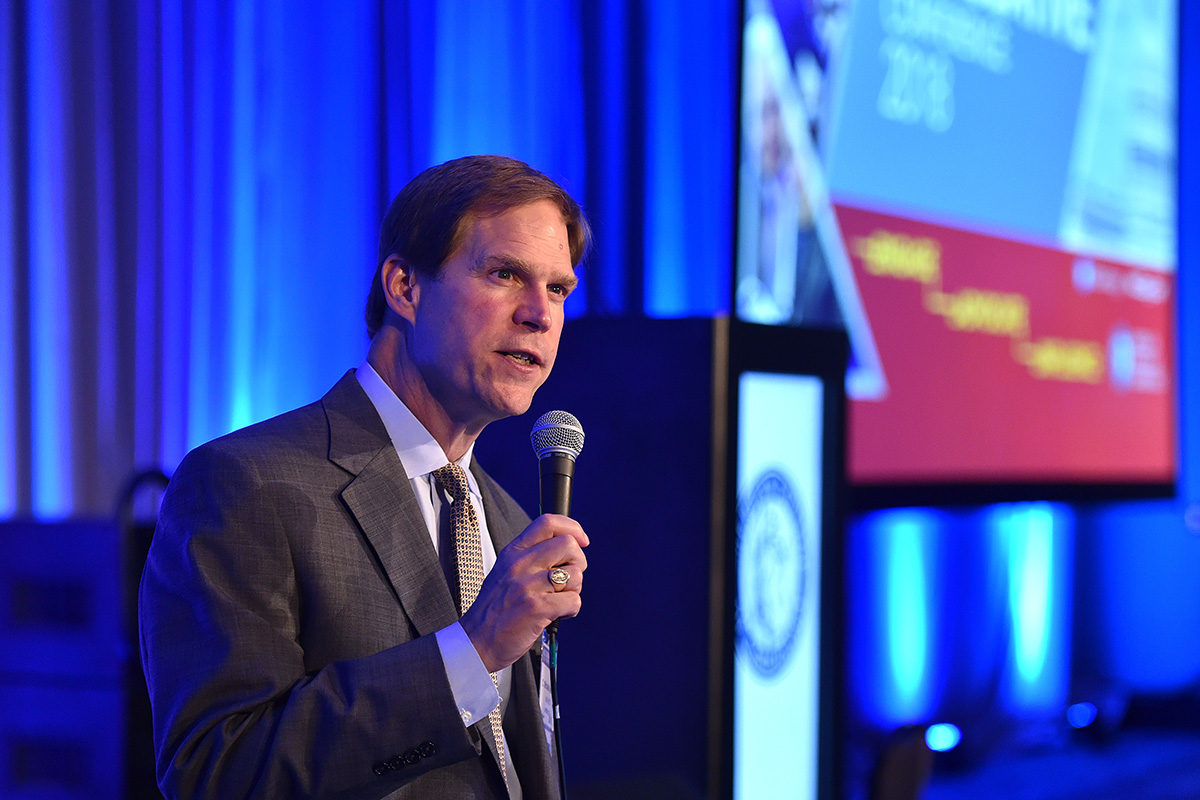Innovation at ACC | I Have an Idea. Now What?

One could argue every physician is an entrepreneur at heart. Unafraid of risk, they're well aware of the potential rewards. It's no surprise then to see so many physicians making the transition into the role of startup CEO. But the path to a successful company is not without its share of challenges. All too often this leads to a physician saying, "I have an idea...so now what?"
While every company's journey is different, there are some constants. Along with discussing these commonalities and overcoming challenges, this article includes insights from Rajesh Dash, MD, PhD, who founded HealthPals in 2015. After shifting its market focus, HealthPals found success as a data and business partner with the ACC.
Examine the Market
The first step for any successful company is to build something that somebody wants. While this sounds simple and even trite, it's a challenge that often leads to failure. In health care, the best advice is often to focus on innovating within your present field. You know the challenges and the problems you wish someone would solve, providing a competitive advantage.
In his work as a preventive cardiologist at Stanford University, Dash focused on predictive imaging. The genesis of HealthPals was a clinic he started to identify and treat risk factors in young South Asians at risk for heart disease. Half of his clinic patients were undertreated for their risk factors and he believed that a digital service would optimize effective treatment.
The next step is to determine the potential market size for your product. Is your solution's target so precise that it ignores a larger potential? What competitive advantages can you bring over the status quo or your competitors? What price is someone willing to pay for what you're offering? Until you have a good idea about the answers to these questions, it's not worth moving forward. Do your research and tap into personal networks to help clear away confusion.
HealthPals found there was a broader need for their idea than what a single clinic could provide. As Dash and his team continued their research, they found many patients met all the clinical criteria for medications, but few had started them.
Further, the team found a gap in the use of evidence-based guidelines vs. current treatment plans. This gap highlighted the need for a solution that could reach a wider audience.
Write the Plan
Now armed with your market research, create your business plan. The plan should make clear what your business does, how you intend to attract customers and how you will structure the company.
In the startup world it's also important to distill this business plan into a slide deck to tell your story. Investors, early employees and even advisors will want to have this explanation available.
Build the MVP
The MVP, or minimum viable product, is the first iteration that shows what a company can do. For many entrepreneurs, the MVP or prototype becomes a stumbling block. Showing this incomplete work to anyone is embarrassing. But as LinkedIn co-founder Reid Hoffman says, "if you're not embarrassed by the first version of your product, you've launched too late."
The MVP process is described well by Free Code Camp:
- Start with a single, simple product solving a tiny subset of a grand problem.
- Keep iterating, while constantly solving bigger, related problems en route to solving the grand problem.
- Constantly communicate the vision of the grand problem you're solving.
Sometimes the MVP isn't designed as an MVP at all. In Dash's case, the clinic was the MVP when it was first built as the end goal. It wasn't until he started working in the clinic, focusing on one population, that the grand problem came into view. By looking at the clinic data, Dash identified a broader problem he wanted to address.
Cardiologist Billy Cohn, MD, has developed numerous prototypes and holds more than 90 patents either granted or pending. He built many of his prototypes from scrap materials, pieces he acquired from home improvement stores or even parts from a dollar store. His work is a perfect example of not overthinking an MVP. It only needs enough function and refinement to get the job done. There's plenty of time to return and improve on the original idea.
Let the Data Decide

One of the toughest challenges any entrepreneur faced is learning their original idea needs to change. Sometimes it's a lack of customers and other times it's a matter of new information after the MVP is circulating. Regardless of the reason, it's important to keep an open mind and not get overly attached to the first idea.
Dash's experiences with data caused him to make a significant pivot. "We set out to build something quite different than what we are now," he says. "The first iteration was a point-of-care solution. We showed automated, personalized, evidence-based lists of guideline-driven treatments. Physicians really liked the idea, but nobody was willing to pay for it."
The concept of product-market fit is an area that often trips up entrepreneurs. The pitfall to avoid is being so in love with your original idea that you're prevented from seeing a broader need or a bigger picture. For HealthPals, the shift was to move toward health systems rather than solo or other small practices.
Never Stop Exploring
After finding the right idea, explore ways it can serve more people. Dash started by focusing on a specific problem that was part of a larger issue. His work took him from a single clinic, to a point-of-care startup, and eventually to health systems. As it stands today, HealthPals has developed a clinical intelligence system (CLINT) that allows patient data to be mapped to the evidence-based criteria of the customer's choosing.
CLINT has opened the door for HealthPals to become a data and business partner with ACC. Now, instead of a single clinic or a handful of offices, HealthPals can run virtual clinical trials against 200 million patient life-years of de-identified data. These trials can test whether recommended treatments work. Beyond these tests, HealthPals now can provide analytics back to the various health systems and companies that work with them. As Dash tells us, "the ACC is a tremendous channel partner and working with them has been a huge turn of events for us."
Read, Research, Repeat
No one article can ever encompass every step required to go from an idea to a successful product or company. Let this serve as a primer for you. As you deal with the frustrations in your daily work and think of ways you could solve them, you have a starting point for making a difference.
Along the way you may need technical help, investment dollars or other assistance. While the grand problem may seem daunting, remember the MVP method of finding a solution. Start by fixing a small problem, look at the market to see if there are bigger opportunities and don't hesitate to find a partner to help you grow. You're already an entrepreneur at heart. Put that drive to use and change the future of health care.
This article was authored by Brad McCarty, Content Manager, at AngelMD.
Keywords: ACC Publications, Cardiology Magazine, Risk Factors, Frustration, Universities, Point-of-Care Systems, Goals, Thinking, Research, Marketing, Intelligence, Reward, Heart Diseases









